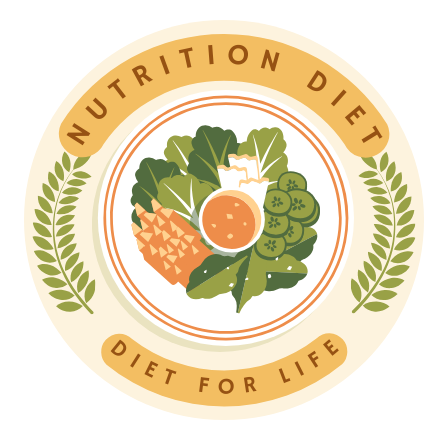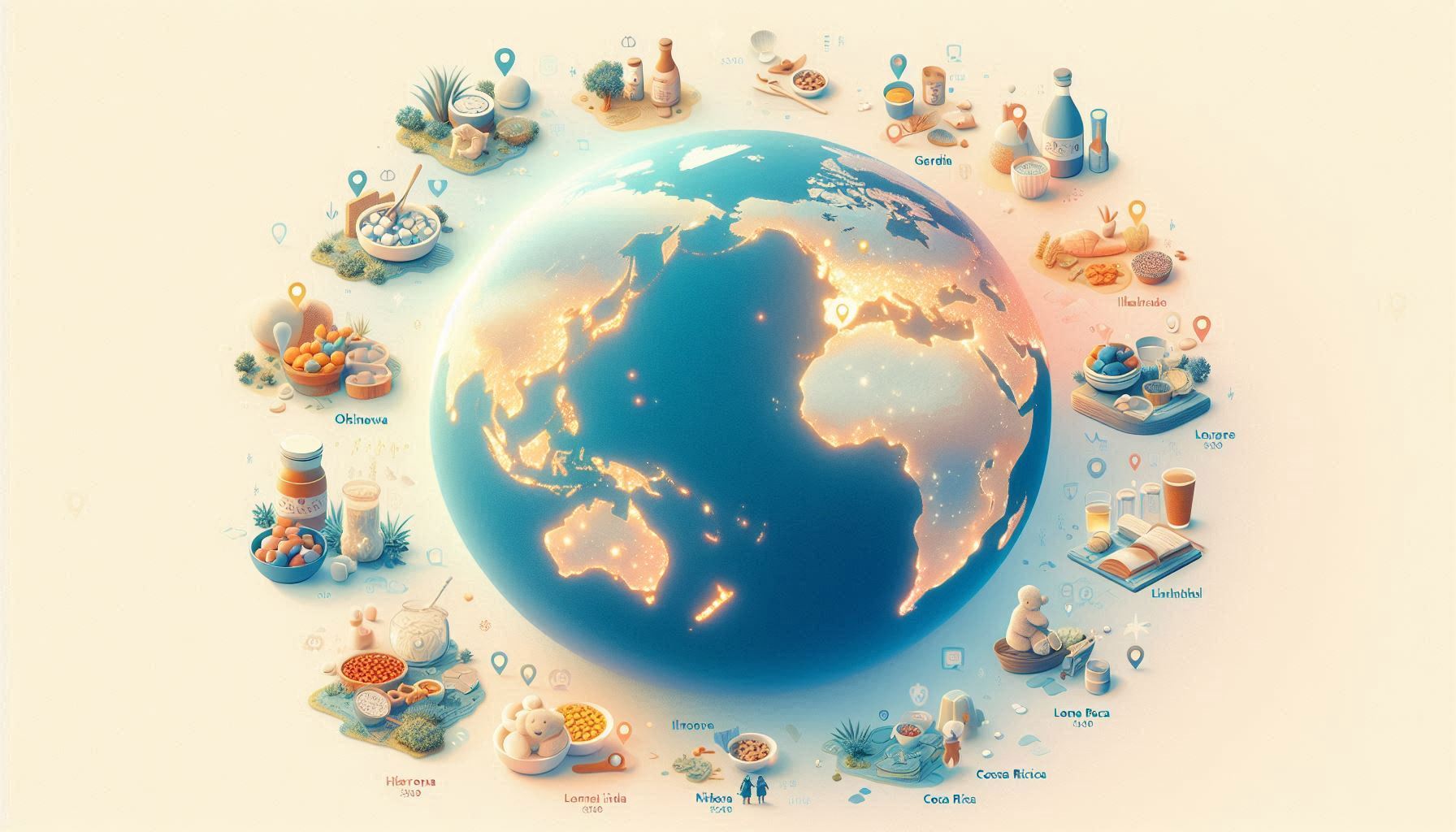In the age of super foods, longevity supplements, and Integra-friendly wellness routines, few health concepts have captured the public’s imagination quite like the Blue Zones. These regions—scattered across the globe—are home to communities that reportedly enjoy extraordinarily long, healthy lives. The idea is simple: if we understand what these people eat and how they live, we can replicate their success. Yet, while Blue Zones offer valuable insights, the way we’ve interpreted—and often misinterpreted—them reveals more about Western diet culture than it does about true longevity.
This in-depth article critically examines the Blue Zones phenomenon, highlighting what mainstream media, wellness influencers, and even some researchers often get wrong. It uncovers the limitations of extracting dietary practices out of cultural context, explains why we can’t simply export longevity, and proposes a more honest, realistic path to aging well.
The Five Blue Zones: A Quick Overview
In a world obsessed with shortcuts to health and longevity, the Blue Zones stand as quiet, enduring counterpoints. These five geographically and culturally diverse regions are home to the highest concentrations of centenarians—people who live to be 100 or more. First identified by author and National Geographic Fellow Dan Better, the Blue Zones are not bound by modern bio hacks, diet fads, or fitness trends. Instead, they reveal a more holistic truth: that longevity is less about any single food or activity, and more about living in harmony with our environment, values, and each other.
The five recognized Blue Zones—Okinawa (Japan), Sardinia (Italy), Ikaria (Greece), Nicoya Peninsula (Costa Rica), and Loma Linda (California, USA)—offer profound insights into how we might reshape our lives. Each region differs in cuisine, climate, and tradition, but they converge on key principles: strong social ties, natural movement, plant-based diets, and a deep sense of purpose. These aren’t simply places where people live long—they are places where people live well.
As we face rising rates of chronic disease, loneliness, and burnout in modern society, the Blue Zones model provides both a warning and a guide. What follows is a comprehensive exploration of each of the five Blue Zones, the principles that unite them, the science supporting their lifestyles, and the lessons they offer for our fast-paced, hyper-connected world.
Core Cross-Zone Principles
While each Blue Zone has its own distinct cultural identity and dietary staples, researchers have distilled a set of shared lifestyle characteristics. These principles form the foundation of the Blue Zones’ success in promoting not only longevity but also quality of life:
- Plant-Centric Diets: Meals center on vegetables, legumes, whole grains, and nuts. Meat, when consumed, is eaten in small portions and often reserved for special occasions.
- Low Consumption of Processed Foods: Diets are based on fresh, local, and seasonal ingredients with minimal reliance on industrialized or ultra-processed foods.
- Daily Natural Movement: Instead of formal exercise routines, physical activity is embedded in daily tasks—walking, gardening, cooking, and household chores.
- Strong Social Networks: Deep, supportive relationships are central. Multi-generational living, tight-knit communities, and lifelong friendships contribute to emotional well-being.
- Purpose and Meaning: Known variously as “ikigai” in Japan or “plan de Vida” in Costa Rica, having a sense of purpose provides direction and resilience throughout life.
- Stress Reduction Rituals: Whether it’s an afternoon nap, prayer, tea with friends, or a day of rest, all zones incorporate ways to unwind and reset.
- Faith or Spiritual Practice: In many of these regions, religious or spiritual observance plays a role in community bonding and mental health.
- Moderate Caloric Intake: Cultural practices like Okinawa’s “hare hatch but” (eating until 80% full) promote mindful eating and prevent overeating.
- Consumption of Alcohol in Moderation: In most zones (with the exception of Loma Linda), moderate, regular alcohol consumption—especially wine shared with friends and family—is common.
- Environmental Engagement: People in Blue Zones are closely connected to their physical environments—walking hills, working soil, harvesting gardens—encouraging both activity and mental clarity.
What We’re Getting Wrong
- The Myth of the Magic Diet: Western media often cherry-picks diet elements—like goat milk from Sardinia or tofu from Okinawa—and frame them as silver bullets for longevity. This reductionist approach ignores cultural context and lifestyle integration. Eating lentils won’t extend your life if you’re also sedentary, isolated, and stressed.
- Survivorship Bias in Longevity Research: Studies on Blue Zones often rely on anecdotal or observational data, which may suffer from survivorship bias. Many people in these regions don’t live past 100—those who do might simply be statistical outliers, not examples of repeatable lifestyle outcomes.
- Commercialization and Branding: The Blue Zones concept has been heavily commercialized, leading to cafes, cookbooks, and lifestyle products that claim to replicate these regions’ benefits. This commodification shifts the focus from systemic cultural habits to individual consumer choices.
Digging Deeper: Diet is Just One Piece of the Puzzle
- Social Networks (Moa in Okinawa): Longstanding friend groups offer emotional and financial support.
- Daily Movement: Most centenarians in Blue Zones don’t “exercise”—they engage in low-intensity movement throughout the day.
- Purpose and Faith: Spirituality and a sense of purpose correlate with longer lives.
- Rest and Rhythm: Afternoon naps in Ikaria, Sabbath in Loma Linda, and seasonal eating all point to lives lived with less stress and more balance.
The Danger of Cultural Extraction
Over the past two decades, the concept of Blue Zones—geographic regions where people live significantly longer and healthier lives—has captured public imagination. Coined by journalist and explorer Dan Better, the Blue Zones include Okinawa (Japan), Sardinia (Italy), Nicoya (Costa Rica), Ikaria (Greece), and Loma Linda (California). These communities appear to defy global health trends, boasting high numbers of centenarians, low rates of chronic disease, and vibrant social lives well into old age.
Butter’s work popularized the “Power 9,” a set of lifestyle habits common to Blue Zones: move naturally, have a sense of purpose, downshift stress, follow the 80% rule (eat until 80% full), eat mostly plants, drink wine moderately, belong to a faith-based community, prioritize loved ones, and belong to a supportive social circle. These practices have since been adopted by wellness influencers, dieticians, city planners, and everyday individuals hoping to extend their own lifespans. But beneath the appealing narrative of universal longevity lies a more complex—and in some ways troubling—reality.
The Danger of Cultural Extraction
One of the biggest missteps in applying the Blue Zones model to the broader world is cultural extraction: the act of isolating beneficial habits from the social, historical, and environmental fabric that gives them meaning. When cultural practices are plucked from their original contexts and repackaged for mass consumption, their efficacy is often diluted or even rendered counterproductive.
Take the Mediterranean diet, for instance. Western health professionals praise it for its emphasis on olive oil, legumes, vegetables, and whole grains. However, what’s often overlooked is how it is consumed. In parts of Greece and southern Italy, meals are traditionally home-cooked, shared with extended family, and eaten slowly in community settings. Food is not merely fuel—it is a ritual, a form of bonding, and a practice tied to a slower pace of life. Simply adopting the Mediterranean diet without the communal mealtime experience or the agricultural rhythms that shape it misses a crucial element of its health-promoting power.
Similarly, tofu in Okinawa is not the highly processed, mass-produced version found in many supermarkets in the West. Okinawan tofu is locally sourced, often fermented, and embedded in a food system that emphasizes freshness, seasonality, and minimal processing. When Westerners add tofu to their diets but pair it with frozen meals, sugary condiments, or a sedentary lifestyle, the health benefits may not translate.
In Nicoya, Costa Rica, beans—a dietary staple—are part of a subsistence agricultural system. Families often grow their own crops, resulting in not only fresher ingredients but also physical activity, a deeper connection to the land, and a sense of purpose in maintaining a traditional way of life. Replacing these homegrown beans with canned beans eaten alongside ultra-processed foods in a fast-paced urban environment severs the food from its cultural roots and potential benefits.
In short, context matters. Diet, exercise, social habits, and even spiritual beliefs function synergistically. When taken out of context, they become fragmented and less potent.
The Changing Face of Blue Zones
Adding to the complexity is the reality that Blue Zones themselves are not static. Globalization, urbanization, and economic pressures are rapidly transforming these regions, often in ways that threaten the very characteristics that once made them exceptional.
In Okinawa, younger generations are increasingly drawn to Western fast food chains, resulting in rising rates of obesity and Type 2 diabetes. Convenience and economic necessity have replaced traditional food preparation and community-based meals. Likewise, in Sardinia, rural depopulation is a growing concern as young people migrate to urban centers for work, disrupting multigenerational households that once fostered emotional resilience and support.
Ikaria, once dubbed “the island where people forget to die,” now faces economic hardships, forcing many to emigrate in search of better opportunities. As communities become fragmented and financial stress replaces a once-simple lifestyle, the holistic support system that underpinned long life begins to erode.
What this demonstrates is that Blue Zones are not magical geographic anomalies but dynamic societies, vulnerable to the same global forces affecting communities around the world. The assumption that these lifestyles can be simply replicated elsewhere ignores the fragile and context-specific nature of their longevity-enhancing qualities.
The Genetic Factor: Advantage or Excuse?
No discussion of longevity would be complete without addressing genetics. It’s tempting to believe that the centenarians of Blue Zones owe their long lives primarily to superior genes, and there’s some evidence to support this. Genetic predispositions for efficient metabolism, cardiovascular health, and slower aging likely play a role in these populations’ extended lifespans.
However, it’s crucial not to overstate the influence of genetics. Research suggests that lifestyle and environment account for up to 80% of lifespan variation, with genetics playing a smaller, albeit significant, role. Even the most favorable genes cannot withstand decades of poor diet, chronic stress, lack of movement, or social isolation. As globalization introduces unhealthy behaviors into Blue Zones, the once-impressive longevity statistics begin to decline, highlighting the limits of genetic protection.
On the flip side, emphasizing genetics too much can be demotivating or even elitist. It can lead people to believe that longevity is either predetermined or out of reach, discouraging them from making beneficial lifestyle changes. It’s essential to strike a balance: acknowledge that genetics play a part, but not so much that they overshadow the importance of daily habits, community, and policy.
Longevity as a Privilege: Inequality and Access
Another often overlooked aspect of the Blue Zones model is the role of socioeconomic privilege. Many of the lifestyle factors that promote longevity—access to fresh food, time to cook, walk able neighborhoods, low crime rates, stable employment, and strong social ties—are increasingly out of reach for the average person, particularly in urban and economically disadvantaged areas.
In major metropolitan areas in the United States or Europe, ultra-processed foods are often cheaper and more accessible than fresh produce. Food deserts—areas with limited access to nutritious food—makes it difficult for low-income families to eat healthily. Meanwhile, rising work hours, childcare responsibilities, and long commutes erode the time and energy needed for cooking, exercising, or socializing.
Safe spaces for outdoor movement—a hallmark of natural exercise in Blue Zones—are not equitably distributed. Crime, pollution, and poor infrastructure in marginalized neighborhoods create barriers to the type of low-intensity, regular physical activity common in places like Ikaria or Sardinia.
Furthermore, loneliness and social isolation—a growing epidemic in modern societies—are inversely related to health outcomes. Blue Zones benefit from intergenerational households, close-knit communities, and regular face-to-face interactions, which are much harder to cultivate in transient, high-stress urban environments.
Without addressing these systemic inequalities, promoting the Blue Zones lifestyle risks becoming a form of aspirational wellness accessible only to the privileged. Longevity, then, becomes less about health and more about social capital—who has the time, money, and resources to live well.
The Checklist Mentality: From Principles to Prescriptions
Butter’s Power 9 was never meant to be a rigid prescription, yet in practice, it often becomes one. As wellness culture commodities longevity, these principles are sometimes reduced to a checklist—ten minutes of meditation, 5,000 steps a day, two servings of legumes, etc.—detached from the context and flexibility that make them sustainable.
This prescriptive approach can lead to anxiety, guilt, and burnout when people inevitably fall short. Moreover, it risks overlooking individual variation in needs, preferences, and capacities. For example, “moving naturally” might look very different for an 80-year-old in Okinawa than for a 40-year-old living in a dense city with a desk job.
Rather than enforcing a universal standard, the Power 9 should be understood as guiding principles—broad themes that must be adapted to each person’s cultural, physical, and emotional environment. Personalization, rather than perfection, should be the goal.
Moving Forward: Toward a Holistic and Just Longevity Model
So where does this leave us? Should we abandon the Blue Zones model entirely? Not necessarily. The value of the Blue Zones lies in their holistic approach to life—emphasizing community, simplicity, purpose, and a deep connection to food and environment. But any attempt to replicate this model must begin by asking better questions:
- What are the underlying values that make these communities thrive?
- How can we adapt those values to vastly different cultural and economic contexts?
- What systemic changes—in food systems, urban planning, labor policy, and social welfare—are necessary to make a healthy lifestyle accessible to all?
Only when these questions are taken seriously can the lessons of Blue Zones move beyond lifestyle branding and begin to inspire transformative change. The allure of the Blue Zones lies in the hope that a long, healthy life is within reach. But to make that dream a reality for more people, we must look beyond superficial checklists and dietary fats. Longevity is not just about what you eat or how much you walk—it’s about how you live, where you live, and who you live with. Without context, culture, and equity, the promise of Blue Zones risks becoming another myth sold to the few, while the many are left behind.
The future of longevity lies not in mimicry, but in meaningful adaptation, policy reform, and a renewed commitment to health as a collective, not individual, pursuit.
Lessons We Can Actually Apply
- Build social connections
- Eat more whole plant foods, but don’t obsess
- Move throughout your day
- Get enough sleep and manage stress
- Find purpose and make time for joy
Conclusion
The Blue Zones—regions of the world where people live significantly longer and healthier lives—have captivated the imagination of researchers, wellness enthusiasts, and everyday people looking for answers to the age-old question: How can we live longer? The instinctive response has been to dissect the diets of these long-lived populations, searching for super foods or secret ingredients. But the real insight the Blue Zones offer is not about diet hacks or miracle meals. It’s about something more profound: alignment.
This alignment exists on many levels. It’s the harmony between values and behaviors—where what people believe is reflected in how they live, eat, work, and rest. It’s the connection between the individual and the community—where relationships are deep, multi-generational, and meaningful. And it’s a rhythm that ties people to nature’s cycles—eating with the seasons, moving throughout the day, and allowing space for both work and rest.
In Blue Zones, meals are not rushed, isolated events or reduced to calorie counts. They are social rituals, infused with tradition and shared in the company of loved ones. Physical activity isn’t tracked by smart watches; it’s embedded in daily life—gardening, walking, cooking, and cleaning. Elders are not sidelined, but respected and integrated into the family and society. Life there moves slower, but with more intention.
This isn’t to say diet doesn’t matter. It does. But not in the way we often think. The people in Blue Zones eat mostly plants, yes—but more importantly, they eat together, they eat locally, and they eat what their culture has taught them to prepare over generations. There’s wisdom in the simplicity. What’s on the plate reflects history, geography, and identity.
In a world obsessed with optimization and bio hacks, perhaps the secret to longevity is not another supplement or fasting protocol. Maybe what we truly need is fewer diets and more culture. Fewer shortcuts and more connection. Less self-quantification and more meaning.
The Blue Zones don’t give us a template to copy, but a lens through which to re-examine how we live. They challenge us to slow down, to reconnect—with ourselves, with others, with nature, and with purpose. If longevity is a byproduct of alignment, then the way forward isn’t about adding more to our lives, but about living more fully in the present—together.
SOURCES
Better, Dan. The Blue Zones Solution. 2015
Plain, Michel, et al. “Identification of a Geographic Area Characterized by Extreme Longevity in the Sardinia Island.” Experimental Gerontology, 2004
Wilcox, Bradley J., et al. “Caloric Restriction, the Traditional Okinawan Diet, and Healthy Aging.” Annals of the New York Academy of Sciences, 2007
Peps, Gianni, et al. “Longevity and Sardinian Diet: Current Research.” Nutrition, Metabolism and Cardiovascular Diseases, 2013
Leaf, Alexander. “Health and Longevity in Okinawa.” JAMA, 1995
Fraser, Gary E. “Diet, Life Expectancy, and Chronic Disease: Studies of Seventh-Day Adventists and Other Vegetarians.” The American Journal of Clinical Nutrition, 1999
Trichopoulou, Antonia, et al. “Adherence to a Mediterranean Diet and Survival in a Greek Population.” New England Journal of Medicine, 2003
Santos, Maria, et al. “Health and Aging in Nicoya, Costa Rica.” Journal of Aging Studies, 2010
Whiting, Jason. “Faith and Longevity: The Loma Linda Example.” Journal of Religion and Health, 2011
Pala, Valeria, et al. “Mediterranean Diet and Longevity.” International Journal of Epidemiology, 2009
Chaw, Kay-Tee, et al. “Combined Impact of Health Behaviors and Mortality.” Plops Medicine, 2008
Hejlsberg, Jacob V.B., et al. “Genetic Influence on Human Lifespan.” Nature Genetics, 2006
HISTORY
Current Version
June 13, 2025
Written By
ASIFA




